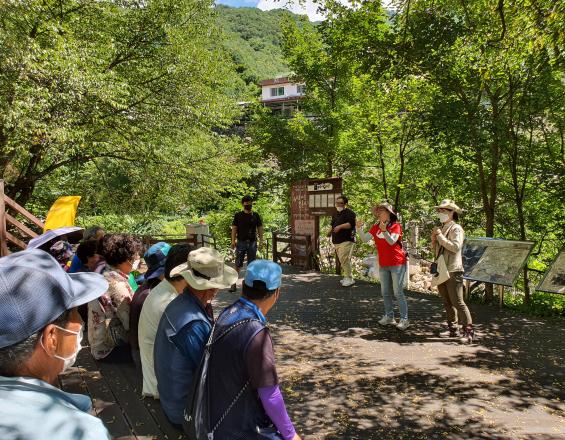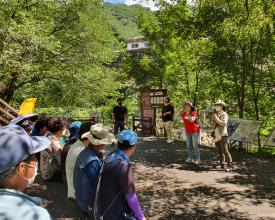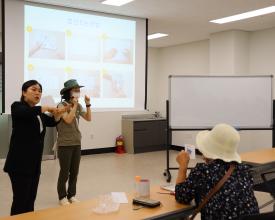
National Parks for All: Visitor Services Using Sign Language

Visitor services for deaf and hearing-impaired community have been prepared in Korean National Parks; illustrated encyclopedia and nature commentary videos using sign languages.
The sign language-based illustrated encyclopedia for insects and plants was published by the Bukhansan National Park Dobong Office in 2020, and it contains 60 species that are easily seen in the national park. To overcome the lack of sign words for flora and fauna, sign language specialists cooperated with park rangers to make new sign names.
In Juwangsan National Park, sign language-based nature commentary videos were produced with cooperation with local sign language interpretation center. The video introduces the ecology, historical tales, and major attraction sites of Juwangsan with sign language for deaf and hearing-impaired community who had little opportunities to enjoy nature and culture due to the lack of materials using the sign language.
Context
Challenges addressed
Location
Impacts
Before the projects, the number of flora and fauna words in the Korean sign language dictionary was only 61, which accounts 0.3% of 17,242 words in the dictionary. This causes limitations to accurate communication using ecological terms through sign language.
However, through the sequence of projects, Korea National Park Service (KNPS) contributed greatly to increasing the number of ecological terms and expression using sign language and laid down a foundation for the standard by publishing the first illustrated encyclopedia for ecology using sign language in Korea. In 2021, 50 species of insects and plants will be added up in the encyclopedia and by 2022 new illustrated encyclopedia for birds and mammals will be published.
These efforts provide more opportunities with discrimination-free visitor services unique to national parks, which allows to satisfy the diverse needs of the hearing-impaired and supporting social participation by expanding the access to natural interpretation. The Services will be expanded to 10 national parks during 2021, and all 22 national parks by 2022.






